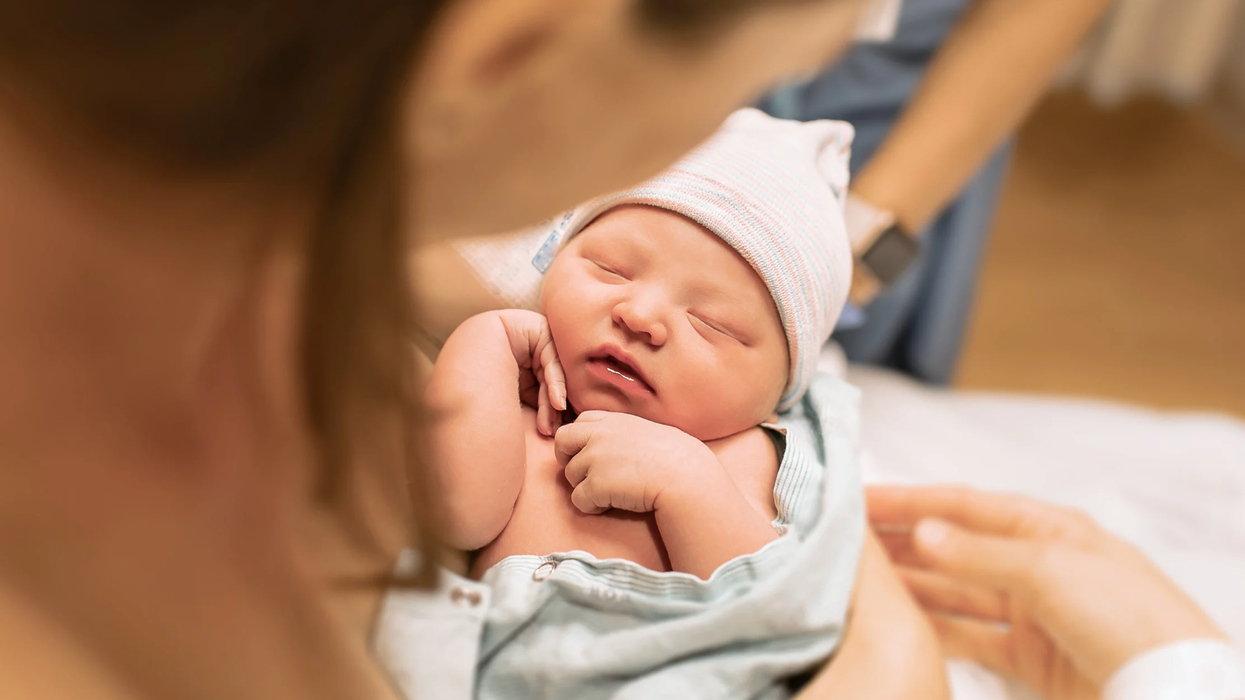Flight attendants never forget the first time they see themselves in uniform. It’s one of the most exciting moments of their career, even when the uniform is hideous.
The first airline I worked for was a low-cost carrier: Sun Jet International Airlines. I was 24, which might explain why I thought I looked great in my white button-down blouse, two silver stripes adorning each shoulder, tucked into pleated, navy blue Bermuda shorts with navy blue hose and heels. Let me repeat: pleated shorts. With heels. I loved the ridiculous getup. After all, it showed I was a flight attendant! The snap-on tie didn’t even bother me (until I spotted a woman working at the Nathan’s hot dog stand at Newark Airport wearing the same snap-on). But that’s another story.
Now imagine how I felt a year later when a major carrier hired me as a flight attendant. In training, when I stood in front of the mirror for the first time in the new uniform, I almost pinched myself to make sure I wasn’t dreaming. I nearly broke down and cried, that’s how happy I was. I could have kissed each and every one of my instructors that very moment. Even though they scared me. Even though the cost of the uniform ($800) would be payroll-deducted from my first couple of paychecks.
Flash forward 20 years and imagine how excited I was when American Airlines announced we were getting new uniforms. Oh my gosh, I couldn’t wait.
Well now, five months later, that exciting new uniform is in a garbage bag that’s in a tub that’s in the basement of the building I stay in when I’m in New York to work. It’s marked “Evidence.” Now I wear look-alike pieces made by Calvin Klein, bought and paid for by yours truly.
My uniform makes me sick (literally).
Why? I’m not sure. I have a few theories, but since I can’t prove any of them, I can only say that before the new uniform I felt great. Now I feel horrible every time I go to work. Since the uniform debuted on September 20, I’ve seen more doctors than I’ve ever seen in my life, and I’ve learned things about toxic chemicals I never knew before. Before the new uniform I didn’t know what “sensitizers” were or what “synergy” meant, and I sure as heck would have never dreamed I’d develop multiple chemical sensitivity. Now I’m practically an expert on the subject.
Before the new uniform, I had no idea there was a group at Harvard studying flight attendants in relationship to endocrine disruptors, and if I had, I wouldn’t have cared. Now I beg them to study me. They have a paper coming out focusing on uniforms and flight attendant health next month. I can’t wait to read it.
But let’s talk about what it’s like to wear a uniform. If I were to wear retail clothing the way I wear a uniform, it would fall apart in a year. Uniforms are made to last. That’s why they’re subjected to testing that’s totally different from retail clothing, and why they’re treated with so many chemicals. The chemicals not only make them last longer than retail clothing, but they also make them look good. There’s a reason why I can wipe tomato juice off my skirt and why my shirts barely wrinkle.
The big difference between retail clothing and a uniform is you’re required to wear a uniform to work every time you go to work, which means you wear certain pieces of clothing more in a month than most people wear in a year. This is what makes it easier to pinpoint a problem with the clothing industry.
If I were to wear a sweater on a day off that made me feel sick, I’d just think I might be coming down with something. But with a uniform you realize that you only feel bad when you’re wearing the uniform. You might notice that you have a persistent dry cough at work, but not at home. When the uniform is on, you feel nauseous. But then you take it off and you feel fine. You never get a nosebleed when you’re out of uniform, only when you’re in uniform. Eventually, you connect the dots. You bag up the uniform and bury it in your backyard. Your neighbor’s backyard.
It took me two months to realize my health issues might be related to my new uniform. I don’t know if I would have figured it out so quickly if I hadn’t been reading up on what had happened to the Alaska Airlines flight attendants who had the same issues with their uniforms that were made by the same manufacturer. (They have since been recalled.) After three months in uniform I became positive my health issues were related to what I was required to wear to work.
It started with thyroid issues. After six days in uniform my TSH (thyroid stimulating hormone), which had been stable for years, was out of the normal range. (I get my blood tested every three months.) My doctor upped my dosage of medication and I stopped wearing the official uniform and started wearing my fake Calvin Klein uniform. Problem solved, I thought.
Wrong.
[quote position="full" is_quote="true"]Four months after we were issued the new uniforms my heart started racing.[/quote]
Four months after we were issued the new uniforms my heart started racing. At first I wondered if it was anxiety. I wondered what it was that made me feel so anxious as soon as I got to the airport? Was it the fact that I had just started flying more international trips? Was I anxious about my crews? It didn’t make sense because I love flying to Europe and I always enjoy being around the people I work with.
Then I realized my heart was racing—not because I was stressed out or anxious, but because my coworkers in uniform were nearby. I’m not sure if I would have figured that out if the cough hadn’t started at the same time. Nonstop all flight. Away from colleagues in uniform I was fine. Near them I can’t stop coughing.
Respiratory issues followed next. Five months after the new uniform was released,I found myself short of breath at work. My lungs felt like they had shrunk. I ended up in the emergency room in December. I was diagnosed with RAD (reactive airway disease) and was given an inhaler and steroids. In January I broke out in hives. I haven’t been to work since. I wanted to give myself a little time to recover. My first trip is next week. I’m a little scared to see what February brings.
So far, thousands of my colleagues have had a “reaction”. Some have respiratory problems; others have wicked rashes and skin irritations; others have debilitating fatigue.
[quote position="right" is_quote="true"]My lungs felt like they had shrunk.[/quote]
Workers’ compensation cases are denied because this is considered an “allergic reaction.” In workers’ comp world, an allergic reaction is personal and, therefore, has nothing to do with the job. Never mind the job requires us to wear a uniform that made us sick. OSHA refuses to get involved because the airline has dealt with the uniform crisis by allowing us to wear the old uniform or our own look-alike pieces. In their minds the problem is solved. I’m here to tell you it’s not. Coworkers who are still wearing the new uniform make us sick.
The company is adamant that can’t happen. And yet it does happen. It is happening. To me and thousands of others. Now some flight attendants (rampers and customer service agents too) are out of sick time and are borrowing money from family or friends. Some are being harassed by managers due to their poor attendance and have been threatened with being fired.
Meanwhile the company continues to remind us they’ve spent over a million dollars to test the new uniform—to prove it’s safe. They’ve tested it three times already, and each time the test result comes back the same: safe. Never mind the 3,000 sick flight attendants. I have no idea how many pilots, customer service agents, or rampers have had reactions. All I know is 1 out of 10 flight attendants have been affected. I should say 1 out of 10 flight attendants have reported they’ve been affected. Many choose to suffer in silence.
I’ve been sharing my story on social media. A journalist sent me a link to a story about the women who painted watch dials with radium — women who worked with and were sickened by radiation. They too were told it was safe — until their numbers made it impossible to deny it wasn’t safe.
Remember when scientists claimed asbestos was safe?
[quote position="left" is_quote="true"]Remember when scientists claimed asbestos was safe?[/quote]
That’s the problem with big business. Big brands make a lot of money from cheap clothes. It’s in their best interest to keep the public in the dark, to keep repeating everything is A-ok—even when it’s so glaringly not ok.
“Where’s the data, the proof?” I keep hearing.
I’m the data. I’m the proof. ME. I’m the lab rat. Too bad I’m not enough. Too bad more of my coworkers will have to get sick before anyone will take it seriously. Meanwhile those of us who have already had reactions will continue to get worse.
“I’m not contagious,” I’m always telling coworkers as I cough uncontrollably while at work. “It’s the uniform.” I went through an entire bag of cough drops on my last flight. During the beverage service I had two in my mouth at the same time just so I wouldn’t cough all over passengers when I asked them what they’d like to drink.
Many of my coworkers don’t believe me. They don’t believe it’s the uniform. Even when they’re scratching or coughing or complaining about any of the other numerous symptoms I’ve listed above. I don’t blame them. It’s kind of crazy to think your clothes could be poisoning you.
Meanwhile the chemicals continue to build up in our system. It takes some people longer than others to have a “reaction.” It can be hives or a rash or it can be worse. Some people feel extremely fatigued, others have bloody noses, eye infections, or they become nauseous. Others get terrible sinus infections. After the third round of antibiotics they might connect the dots. It usually takes another reaction on top of the first reaction to figure it out. You see, once you have a reaction you don’t get to have the same reaction. It gets worse as you absorb more chemicals. Then all the chemicals you’ve absorbed begin to affect you on your days off.
Now I get winded walking the dog. I’ve been doing cardio five days a week since college. Walking the dog didn’t bother me until two months ago. Once toxic chemicals build up in your system you become extremely sensitive to chemicals in the environment. Then you develop what’s called multiple chemical sensitivity. Google it. Now I only buy fragrance-free products.
There are so many toxic chemicals in fragrance. Did you know that? I didn’t either … until now.
The other night someone I know started vaping. Right away I began to have the same reaction I have when I’m around coworkers who are wearing the new uniform. My chest felt tight. When I said something to him, he swore it was safe. “It’s only glycerin, steam and fragrance.”
I could tell by my reaction it wasn’t safe. I could tell by my reaction something in the vapor is also in my uniform. I did a little research. Formaldehyde (among other things.)
Formaldehyde is an eye irritant. (It’s also an endocrine disrupter. I’ve learned so much in the last three months). Last night my eye started watering. This morning it was so swollen it looked as if a bee had stung me. I’ve never had a reaction to vaping before — or to a uniform — until now.
[quote position="full" is_quote="true"]I shouldn’t have to be a human guinea pig.[/quote]
The point, is the uniform is affecting my life — at work and at home. The uniform has changed me forever. I’ve stopped burning candles and I’m afraid to wear perfume — things I used to love! Now I dread going to work. I love my job, but my job is making me sick.
Mark my words the uniform is going to cause long-term health issues for a lot of people. I pray I’m not one of them. Right now we don’t need lawyers to fight this; we need scientists and chemists to figure out what the hell is going on. I shouldn’t have to be a human guinea pig. Flight attendants shouldn’t have to prove there’s a problem with the garment industry, but we will — by suffering.
Which brings us to that word synergy — and testing. The proof. The data. Maybe one uniform piece tests safe, but all of it worn together is unsafe. Chemicals on top of chemicals. Layers upon layers of chemicals. Then mix in the chemicals we come into contact on the airplane that are in the carpets and seats: flame retardants and more formaldehyde. Remember a flight attendant wears a uniform all day and that day can be 10–12 hours long. Mix in body heat that releases the chemicals and opens the pores so you absorb more chemicals.
Now add in a little recycled air and a flying tube packed with passengers who are warm and wearing their own chemicals. That might explain why flight attendants were quicker to react and to have more severe reactions than other people at my airline, like gate agents, who are wearing uniforms made by the same manufacturer. Or maybe it’s just a batch issue. The uniforms come from multiple countries. Mine were labeled Bangladesh, China, Sri Lanka.
The scary part is not knowing what the hell is happening.
[quote position="right" is_quote="true"]The scary part is not knowing what the hell is happening.[/quote]
It’s not just my airline. I’ve written about the uniforms before. Since then I’ve received numerous emails from flight attendants who work for other airlines who are having similar issues with uniforms made by the same manufacturer. And I’m not just talking about Alaska Airlines, which faced similar accusations by flight attendants in 2012 who said uniforms were making them sick. I’m talking about regional carriers and a Canadian carrier.
What’s even more frightening is this isn’t just happening to flight attendants. Last week one of the many doctors I’ve seen in the last three months sent me to a lab to give blood. The woman who took my blood wanted to know why I was giving so much blood. I told her about the uniforms. She told me about her lab coat. She said their lab coats were a problem for some of her coworkers who were “allergic” to the chemicals they treat it with to make it water resistant. “So we can wipe things off.”
UPS has had problems too.
This is bigger than us, bigger than a uniform problem. But we can pinpoint a problem easier because we wear these uniforms every day and therefore we’re a little more in tune to how they make us feel.
When I shared a photograph of a flight attendant who had what looked like a chemical burn all over her face on Facebook, an old high school friend I haven’t heard from in 20 years reached out and shared a photograph of her young daughter who had the same reaction on her face. “We were able to narrow the problem down to an outfit because she wore it three times and it happened every time she wore it,” my friend wrote. “We threw it away and she hasn’t had a reaction since. But she has sensitive skin.”
Sensitive skin. Before the uniform I didn’t have sensitive skin. Now I have sensitive skin. Funny how that works.
In a private Facebook group for airline employees, a few coworkers keep saying the uniform is safe simply because it tested safe. I remember when I first heard about the Alaska Airlines flight attendants when they started having reactions and blowing it off. Unless it’s happening to you and you’re following other people’s stories about their reactions and you’ve done a good deal of research, it’s easy to believe the uniform is only a problem for some people.
It’s easy to believe we’re just feeling a little itchy and we should figure out a way to suck it up and deal with it. But it’s so much worse than having to pop a little more Claritin and an entire bag of cough drops. I tried to explain to one of the coworkers that there’s something wrong with the testing, that the environment matters, that the chemicals take time to build up, but she wouldn’t hear it. Finally she said, what are you going to do HEATHER POOLE if they don’t recall the uniform? (She wrote my name in caps like that)
Quit. I’ll have no choice but to quit a job I love.
That doesn’t seem right.





















